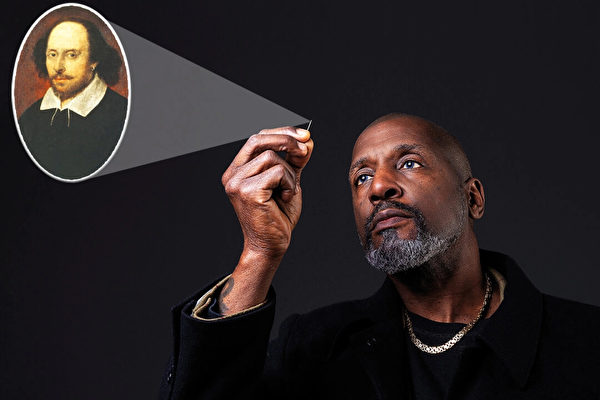Recently, a world-renowned micro-sculptor showcased his latest captivating artwork: a miniature half-body portrait of William Shakespeare (April 23 marks Shakespeare’s birthday and the anniversary of his passing).
The British artist Willard Wigan MBE, who has autism, used a small stubble from his own facial hair as a brush, along with an extremely fine eyelash, to successfully create this exquisitely detailed sculpture titled “The Bard of Arvon: To See or Not to See”.
In order to pay tribute to the greatest playwright in the world, Willard was determined to create the smallest half-body portrait ever. This delicate miniature art piece took 16 weeks to complete and was placed inside a hollowed-out human hair strand. To the naked eye, the entire micro-sculpture appears smaller than the punctuation mark printed in a newspaper.
Willard’s main tool was a tweezer made from an eyelash, split in half from the middle. To “enhance contrast,” he deliberately used a gray-white stubble instead of pure black, in order to present the “vivid image of this literary master in front of the world.”
It is understood that this artist gained inspiration for creating this artwork while visiting the birthplace of William Shakespeare in Stratford-upon-Avon.
Willard said in a press release, “I believe Shakespeare is the greatest writer in the world’s history, and I want to honor him in the best way I can.”
Before sculpting each tiny and fragile component and coloring them, Willard takes time for meditation, which helps slow his heart rate and breathing rhythm, reduce hand tremors, and alleviate stress.
In an interview with The Epoch Times in 2023, Willard previously said, “You have to slow your breathing down, you can only operate in between each heartbeat, it’s like trying to stick a pin into foam without it bursting.”
“This work is extremely difficult as there’s no enjoyment during the creative process. Only when the work is completed or when others appreciate it, it brings me joy. It evokes various expressions of astonishment because they find it hard to believe a sculpture can be so astonishingly small.”
In his sixties, Willard hails from the county of West Midlands, England. He was ridiculed by teachers and peers in school due to his inability to read or write, and he was diagnosed with autism only at the age of 50. As a child, he enjoyed immersing himself in his own imaginary world, and with his mother’s help, he gradually began to explore his innate artistic talent.
“Autism does not mean a ‘death sentence’,” Willard told the newspaper, “If your child has autism, please encourage them because once you tell someone they are doing something great, it motivates them.”
This artist has previously created many miniature masterpieces placed within the eye of a needle, including “14 Camels,” “The Last Supper,” “Three Little Kings,” “Robin Hood,” “Santa Claus,” “Fairy Mushroom,” and “Queen Elizabeth II,” among others. The details of these works can only be seen under a microscope.

